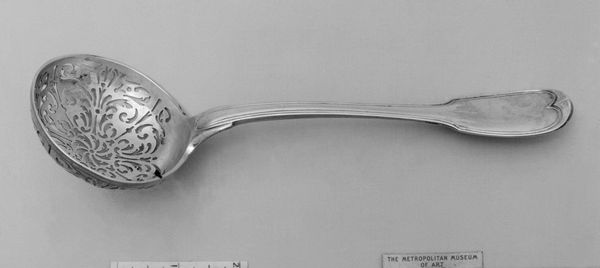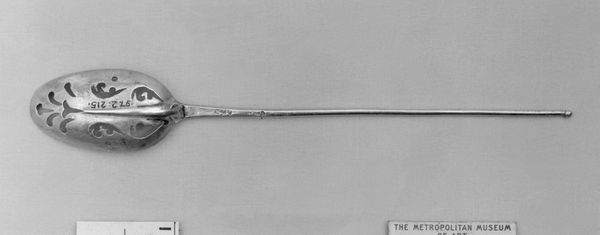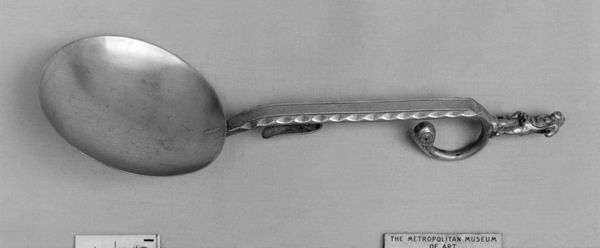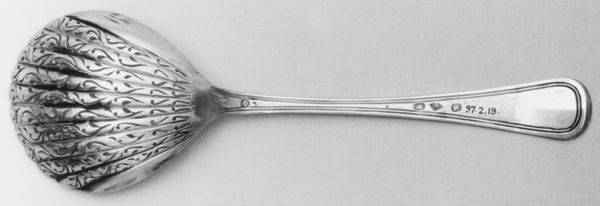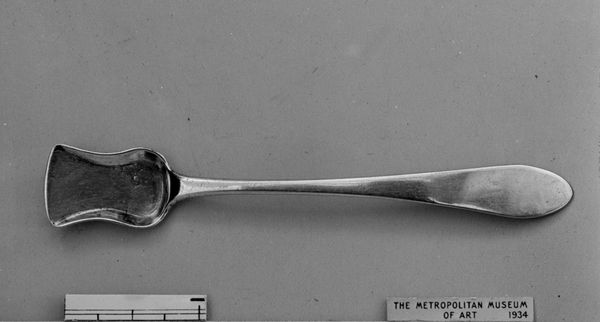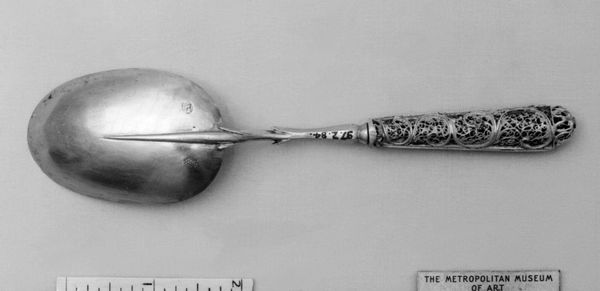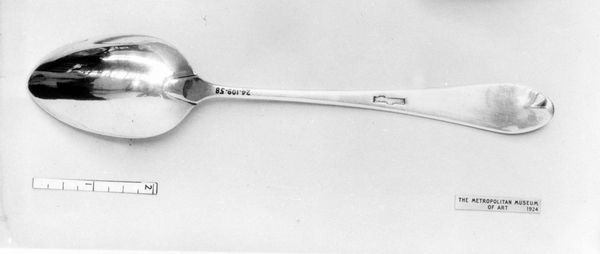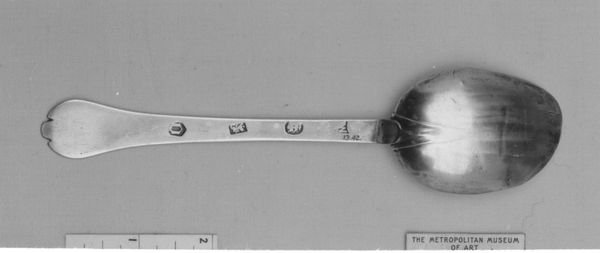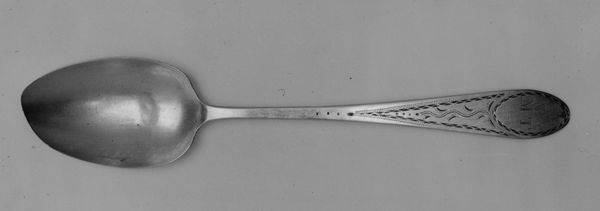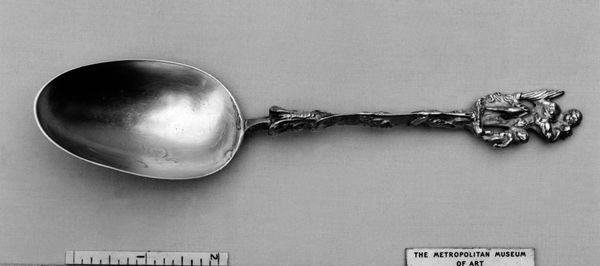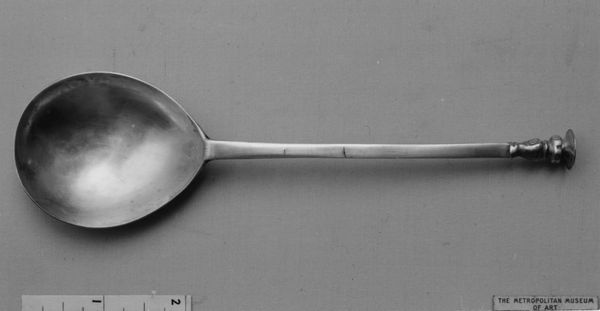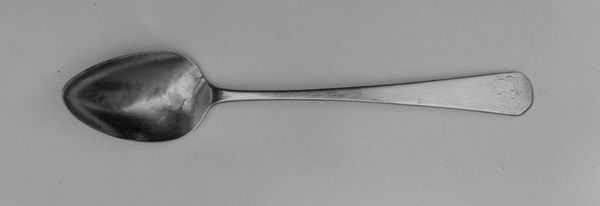
silver, metal, sculpture
#
silver
#
metal
#
sculpture
#
sculpture
#
decorative-art
Dimensions: L. 4 in. (10.2 cm)
Copyright: Public Domain
Editor: So, this is a "Salt Shovel" from between 1770 and 1800, currently housed at the Met. It's attributed to Nehemiah Norcross, made of silver, I wonder why someone bothered to sculpt a spoon, what are your thoughts on the art piece? Curator: It whispers of bygone eras, doesn't it? This small silver object speaks volumes, I feel like I can imagine it nestled amongst fine china and candlelight, wouldn’t you agree? Think about the dining rituals, the status of salt as a precious commodity… Do you feel how something so seemingly utilitarian becomes almost ceremonial? Editor: I guess so, I was too busy looking at the object itself. Why is it a shovel, and not just a spoon? Does this relate to the cultural context as well? Curator: Precisely! The "shovel" design speaks to the way salt was served, often in a shared, open vessel. This little utensil wasn't just for dispensing flavour; it was a symbol, wasn't it? Almost like dipping your hand into shared wealth, the design invites one to think a bit about how the elites ate. You feel the almost theatrical quality about the item. Does it almost feel too excessive? Editor: Definitely, it feels so elegant, more like an ancient chalice than a salt spoon. The curvature is very elegant, too, the metal shines and looks more decorative than just functional. Curator: Good point about that reflective quality; light would have danced across its surface, enhancing the dining experience. In some ways, it shows an element of design restraint as it could be ostentatious with this type of commission. Are there things we could see being done to change that effect? Editor: Yeah, like precious stone inlays, or maybe a more bombastic overall shape and material. It is crazy to think how such a humble tool, like a tiny salt shovel, holds a history of craftsmanship and dining, almost lost. Curator: Exactly, each piece invites speculation! Let us also not forget about how it is still here. Preserved, for everyone to enjoy and learn from, for us to continue this discussion many years into the future. What do you think you will be pondering the most in the next few days about the item? Editor: I'd say the little touches: shape, feel, size, they show that every object, no matter how small, can tell an interesting story.
Comments
No comments
Be the first to comment and join the conversation on the ultimate creative platform.
